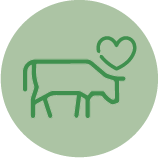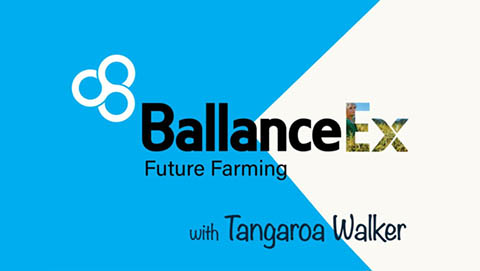A closer look at animal wellbeing

Why is animal wellbeing important?
Besides the obvious, that we care about our animals and want them to thrive, animals are a vital part of a farming business. As we look for optimisation and efficiencies in all our farm systems, the same can be done in our animal management systems. There is no denying healthy animals are more productive animals and are good for the bottom line. But animal wellbeing also plays a part in public perception and the wider New Zealand food story, and as such, consumers are increasingly looking for evidence of what they perceive to be well cared for animals. For example, some UK supermarket chains now require suppliers to meet animal wellbeing criteria before being allowed on the shelves.

What technologies are available?
Wearable tech and real-time monitoring are already here – sensors, tags, and collars that let us track a herd’s movements, temperature, stress levels, and other biological activity. A practical example of this is a farmer who realises their herd clusters around the farm gate when they finish feeding. Using tracking technology and a map on their phone, the farmer can maximise efficiency based on their herd’s behaviour.
Prediction technologies, such as reliable weather forecasting tools, help us know when to move animals to sheltered paddocks to beat a southerly gale, or stock up on feed ahead of an adverse weather event.
Beyond digital technology, advances in feed and medicine offer even more tools for a farmer. Stock feed provides essential nutrients and trace elements not available in pasture, which can help strengthen hoof integrity to prevent lameness or reduce the risk of mastitis, among many other ailments that affect an animal’s wellbeing.
Developed in the 1950s, there are now several lab tests used to identify nutrition and metabolic disorders of stock. They are useful in helping identify unseen or difficult to diagnose nutritional problems, long before they’re visible to a farmer.

What is best practise?
The Five Domains Model of Animal Wellbeing was developed In New Zealand and supersedes the more globally recognised Five Freedoms of Animal Welfare.
The new model has a greater focus on positive experiences and how the animal ’feels’ - rather than avoidance of negative experiences. The Five Domains are:
- Nutrition – Providing enough feed and fresh water is essential. The right feed matters too – pasture may need to be supplemented with trace elements and minerals to address deficiencies.
- Environment – A clean, comfortable environment to live in, and shelter from the elements. This starts with the design of the farm itself but is also about how the farm is maintained and operated.
- Health – Animals need to be provided with medical care when sick or injured. Lately the focus has been on preventative sciences and technologies. Rather than treating illness, the right nutrients and data can prevent the illness in the first place.
- Behaviour – Animals should be able to express their normal behaviour, feel freedom of movement as well as social interaction with herd mates. For dairy cows, this may mean having well designed milking sheds as well as yards to minimise blind spots and stress.
- Mental State – This is the most difficult to monitor – animals can’t tell us that they’re scared or distressed. Technology can help, but your intuition as a farmer is also essential here.

How can farmers make use of these technologies?
New technologies, systems, and breeding techniques are here and becoming increasingly accessible and more widely used, which give us a better understanding of animal wellbeing.
But these are all just additional tools at our disposal. The farmer is still at the centre of ensuring animal wellbeing, and still needs to know what normal looks like for their animals in order to spot the abnormal. This can only be done by spending as much time as practical with their animals.
Animal wellbeing can’t solely be managed from a computer or phone. But the data acquired through these exciting new technologies goes a long way to enhancing animal wellbeing, which ultimately enhances farming businesses.
Download the PDF version of this conversation
Like and subscribe to BallanceEx Future Farming Conversations
Dive deeper into the topic of food production and listen to the full conversation
Listen now



